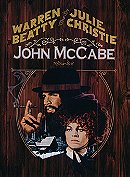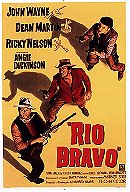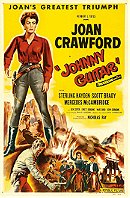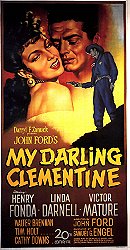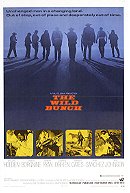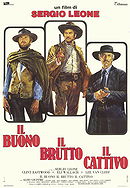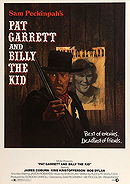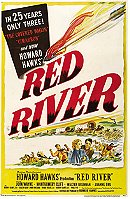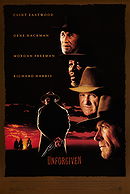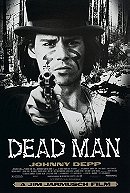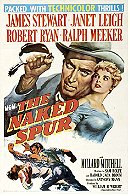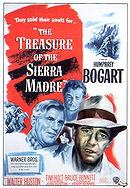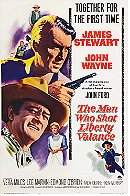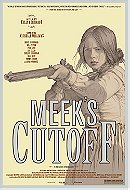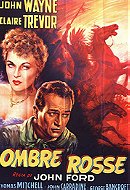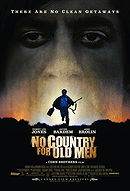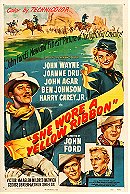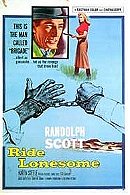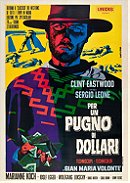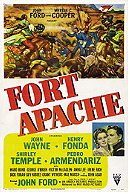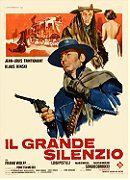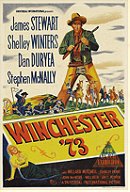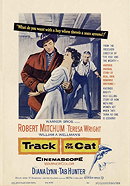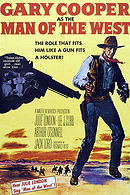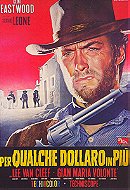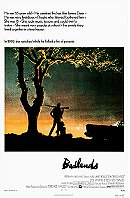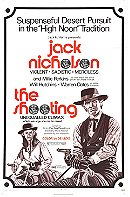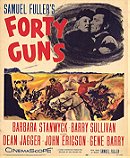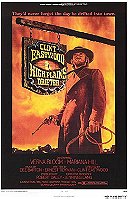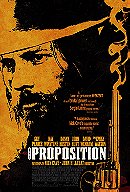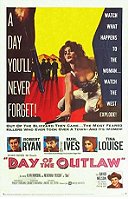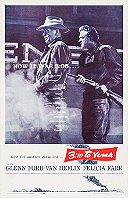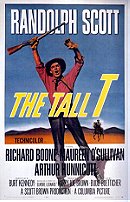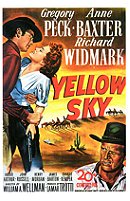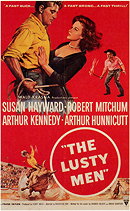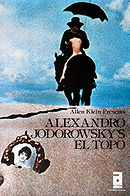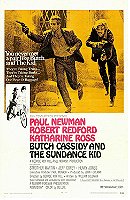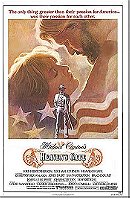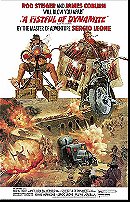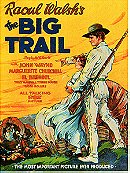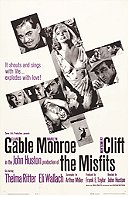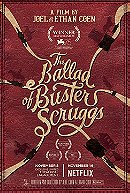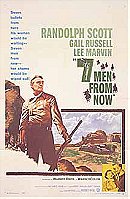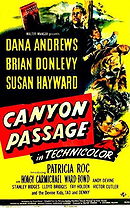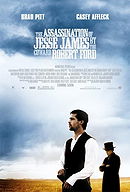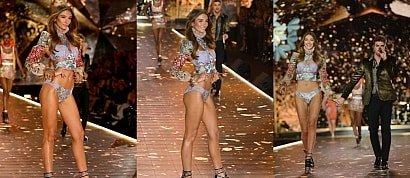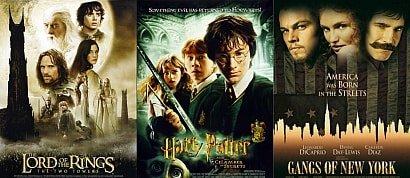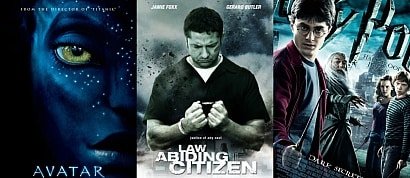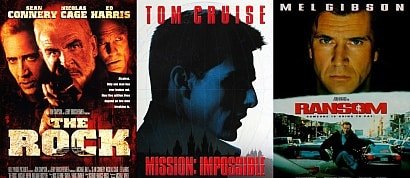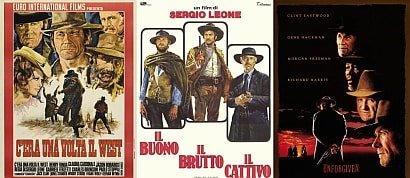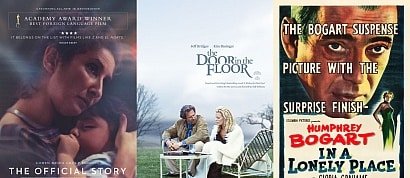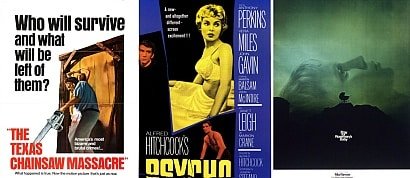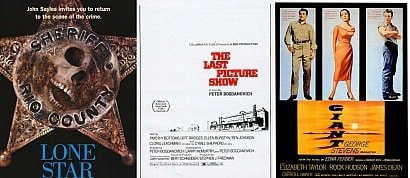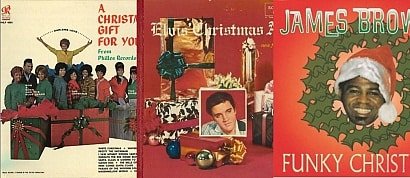Slant's 100 Best Westerns of All Time
Sort by:
Showing 1-50 of 100
Decade:
Rating:
List Type:
The classic western was conceived from an undeniably Euro-centric, colonial perspective, with white characters upholding their supposed birthright of freedom and property. In the western, the immense country beyond the Mississippi River figures at once as the sublime object that exceeds the human grasp and as a quantifiable possession. And the prototypical cowboy straddles these paradoxical poles: at home on the dusty, timeless landscape, but also facilitating its incorporation into a society marching toward the Pacific. In 1925’s Tumbleweeds, the herder hero played by William S. Hart reluctantly makes way for the newly arrived homesteaders; in 1953’s Shane, Alan Ladd’s eponymous character rides off after making the West safe for the American family; and in Sergio Leone’s 1968 opus Once Upon a Time in the West, Jason Robards’s Cheyenne sacrifices his life not to end the expansion of the American empire, but to facilitate a more just one.
But this standard narrative mold, to paraphrase John Ford’s 1962 classic The Man Who Shot Liberty Valance, only represents the printed legend. The historical American West was more diverse and less male-dominated than the one Hollywood imagined for many years. Life in the Western territories demanded just as many determined women as it did men, and suffragettes had their first major victories in the West: Wyoming was the first state to grant women the vote, and the first to have a woman governor. A third of all cowboys herding cattle on the Great Plains were black—a fact that’s only surprising until you consider which groups were most in need of self-reliant vocation and freedom from the long arm of the law in the wake of the Civil War. Every once in a while, these historical realities break through the filtered screen of the Hollywood western: Joan Crawford and Marlene Dietrich play no-nonsense saloon owners in Nicholas Ray’s Johnny Guitar and Fritz Lang’s Rancho Notorious, respectively, and Sidney Poitier’s often overlooked Buck and the Preacher from 1972 is one of the too-few films that are centered around black frontiersmen.
When Europeans, influenced by decades of dime novels and Hollywood flicks, got around to making westerns, the resulting films would be part of this swing toward revisionism. By this time, European filmmakers were coping with the aftermath of the most devastating conflict in human history, and Italian westerns like Sergio Corbucci’s The Great Silence and Leone’s The Good, The Bad, and The Ugly are infused with the lived-in existentialism of postwar Europe. In them, the American West becomes an otherworldly wasteland of pure brutality and diminished—rather than heightened—agency. Europeans’ estrangement of western film tropes would help spur a revisionist take on the standards of the genre that infuses films produced to this day.
However, for all the observations that such “postmodern” westerns are about the end of the West—in Clint Eastwood’s The Outlaw Josey Wales and elsewhere, represented by the arrival of new technologies like the Gatling gun—the western has always been about endings. It’s no coincidence that the genre’s proverbial image is that of a figure “riding off into the sunset.” The American frontier was declared closed after the 1890 census, a decade before the first western on our list (Edwin S. Porter’s The Great Train Robbery) was produced. Right-wing New Hollywood directors like Sam Peckinpah, Don Siegel, and Eastwood have tended to identify this perpetual fading of the West with the decline of a virile and violent, but honorable masculinity.
The bloodbaths that end films like Peckinpah’s The Wild Bunch arguably represent what Freud would have called “screen memories,” a compromise between repressed memory and images we’ve invented to defend ourselves against terrible truths. The true bloodbaths in the West were the military campaigns against Native Americans, genocidal conflicts that many big-budget westerns keep on the margins, with natives appearing as stereotypical noble savages or town drunks. Ford’s films, as often as they rely on racist characterizations, were often the prestige westerns to look most directly at these wars: The Searchers and Fort Apache explore, in their own flawed fashion, the morally degrading racism in their main characters’ hearts. Some decades later, Kevin Costner’s Dances with Wolves became the paradigm of a post-‘70s cultural sea change: When it comes to “cowboys versus Indians,” the cowboys are no longer the automatic locus of our sympathy.
Today, infusing familiar iconography with new meaning, such revisionist representations of the American West have helped to explode the boundaries of the genre, allowing filmmakers as well as critics to explore cinematic tropes about life on the frontier in non-conventional western narratives. In contemporary films like Ang Lee’s Brokeback Mountain and Chloé Zhao’s The Rider—and looking back to ones like Victor Sjöström’s The Wind and John Huston’s The Misfits—we can recognize something like a western mode, a broader and more expansive cinematic language that has been suffused by the symbols of the American West. The western has proved itself a durable and influential way of talking about the human condition—one that needs not be confined within the frontiers drawn by the Euro-American colonial imagination. Pat Brown
List compiled by the Slant staff.
But this standard narrative mold, to paraphrase John Ford’s 1962 classic The Man Who Shot Liberty Valance, only represents the printed legend. The historical American West was more diverse and less male-dominated than the one Hollywood imagined for many years. Life in the Western territories demanded just as many determined women as it did men, and suffragettes had their first major victories in the West: Wyoming was the first state to grant women the vote, and the first to have a woman governor. A third of all cowboys herding cattle on the Great Plains were black—a fact that’s only surprising until you consider which groups were most in need of self-reliant vocation and freedom from the long arm of the law in the wake of the Civil War. Every once in a while, these historical realities break through the filtered screen of the Hollywood western: Joan Crawford and Marlene Dietrich play no-nonsense saloon owners in Nicholas Ray’s Johnny Guitar and Fritz Lang’s Rancho Notorious, respectively, and Sidney Poitier’s often overlooked Buck and the Preacher from 1972 is one of the too-few films that are centered around black frontiersmen.
When Europeans, influenced by decades of dime novels and Hollywood flicks, got around to making westerns, the resulting films would be part of this swing toward revisionism. By this time, European filmmakers were coping with the aftermath of the most devastating conflict in human history, and Italian westerns like Sergio Corbucci’s The Great Silence and Leone’s The Good, The Bad, and The Ugly are infused with the lived-in existentialism of postwar Europe. In them, the American West becomes an otherworldly wasteland of pure brutality and diminished—rather than heightened—agency. Europeans’ estrangement of western film tropes would help spur a revisionist take on the standards of the genre that infuses films produced to this day.
However, for all the observations that such “postmodern” westerns are about the end of the West—in Clint Eastwood’s The Outlaw Josey Wales and elsewhere, represented by the arrival of new technologies like the Gatling gun—the western has always been about endings. It’s no coincidence that the genre’s proverbial image is that of a figure “riding off into the sunset.” The American frontier was declared closed after the 1890 census, a decade before the first western on our list (Edwin S. Porter’s The Great Train Robbery) was produced. Right-wing New Hollywood directors like Sam Peckinpah, Don Siegel, and Eastwood have tended to identify this perpetual fading of the West with the decline of a virile and violent, but honorable masculinity.
The bloodbaths that end films like Peckinpah’s The Wild Bunch arguably represent what Freud would have called “screen memories,” a compromise between repressed memory and images we’ve invented to defend ourselves against terrible truths. The true bloodbaths in the West were the military campaigns against Native Americans, genocidal conflicts that many big-budget westerns keep on the margins, with natives appearing as stereotypical noble savages or town drunks. Ford’s films, as often as they rely on racist characterizations, were often the prestige westerns to look most directly at these wars: The Searchers and Fort Apache explore, in their own flawed fashion, the morally degrading racism in their main characters’ hearts. Some decades later, Kevin Costner’s Dances with Wolves became the paradigm of a post-‘70s cultural sea change: When it comes to “cowboys versus Indians,” the cowboys are no longer the automatic locus of our sympathy.
Today, infusing familiar iconography with new meaning, such revisionist representations of the American West have helped to explode the boundaries of the genre, allowing filmmakers as well as critics to explore cinematic tropes about life on the frontier in non-conventional western narratives. In contemporary films like Ang Lee’s Brokeback Mountain and Chloé Zhao’s The Rider—and looking back to ones like Victor Sjöström’s The Wind and John Huston’s The Misfits—we can recognize something like a western mode, a broader and more expansive cinematic language that has been suffused by the symbols of the American West. The western has proved itself a durable and influential way of talking about the human condition—one that needs not be confined within the frontiers drawn by the Euro-American colonial imagination. Pat Brown
List compiled by the Slant staff.
The Searchers (1956)
Reflecting on the vast wilderness of the Old West in Blood Meridian, Cormac McCarthy describes it as the final place left on Earth where it was possible to determine “whether the stuff of creation may be shaped to man’s will, or if his own heart is not another kind of clay.” The dramatization of the struggle to tame or be tamed by an entirely new land is what gives the western such enduring appeal. And John Ford’s The Searchers has come to define the genre partly because of its unflinching look at how the American psyche was transformed by the process of building a home, in a place that was both indifferent and actively hostile towards its presence. The plot of the film sees a former Confederate soldier, Ethan Edwards (John Wayne), embarking on an odyssey to return his kidnapped niece to her family. Uniquely capable of tracking her down due to his fierce determination, motivated by a primal hatred of the girl’s Comanche captors, he embodies the abyss of American colonial expansion gazing back at the country that it founded. As the years go by, it becomes unclear whether memories of bloody territorial violence have left enough of his humanity intact for him to achieve what he set out to do. In its celebrated closing shot, the film shuts the door on the western’s most iconic figure, who shoulders the collective shame and pride of a nation as he walks off into a breathtaking but empty vista, framed by darkness. Robb
JxSxPx's rating:


McCabe & Mrs. Miller (1971)
There isn’t a conventional sound or image to be found in McCabe & Mrs. Miller, whose scenes are charged with a jazz-like pulse of controlled spontaneity that would become a Robert Altman trademark. Compared to the obliging alternation of wide shots, medium shots, and close-ups that comprise most films, McCabe & Mrs. Miller’s compositions seem to be too close in on the characters, reveling in the nits and grits of their hair and beat-up clothes, which often obscure the particulars of their identities. The film’s power springs from its destabilizing mix of precise portraiture and epic scale, ugliness and beauty, cynicism and wide-eyed optimism. Moments of transcendence arise with disconcerting casualness, as the narrative is a vase that holds multitudes of smaller stories of nearly equal stature. Yet it’s evasive to discuss the film merely as a series of haunting flourishes. The brilliance of his filmography resides in its mysterious majesty—in how his inspired individual decisions, intuitive yet relatively straightforward in isolation, cumulatively yield something beyond the sum of their considerable parts. Altman called himself a painter, and the word applies not only to the craftsmanship of his images, but to their bottomless figurative nuance. Bowen
JxSxPx's rating:


Rio Bravo (1959)
Howard Hawks’s Rio Bravo isn’t among the greatest American westerns because its standoffs and gunfights are masterfully constructed (though they are) or because the film features “Stumpy,” the most colorfully crotchety old hoot Walter Brennan ever played (though it does). Rio Bravo’s longevity as a cinematic landmark stems from its subtle, character-driven rebuttal to the presumed individualist ethos of its genre. Intended as the anti-High Noon, the film tells the story of a sheriff (John Wayne) who, without the support of the people around him, wouldn’t stand a chance against the criminal gang due to arrive in his town. Featuring a surprisingly vulnerable performance from Dean Martin as “Dude,” the sheriff’s deputy with a drinking problem—as well as an iconic turn from Angie Dickinson as the irresistibly charming “Feathers”—Rio Bravo suggests that tackling social problems requires forgiveness, mutual support, and an openness to personal transformation. Under what seems like the typical postures of dad-movie masculinity, Hawks smuggles a sensitive film about deeply flawed people whose sum is greater than their parts. Brown
JxSxPx's rating:


Johnny Guitar (1954)
Nicholas Ray’s Johnny Guitar upends nearly every convention of the traditional western. Its eponymous hero (Sterling Hayden) is a sensitive soul who wields only six strings, not a six-shooter, and contrary to the panoramas for which the genre is known, the vast majority of the film occurs indoors, using the restricted settings to concentrate focus on the characters’ psychological states. But the biggest aberration of the film is that its conflict, propelled by belligerent men seeking to prevent the railroad from coming to town, actually revolves around the psychosexual war between two women: Vienna (Joan Crawford), owner of a saloon she intends to convert into a tourist attraction by erecting an adjoining train depot, and Emma Small (Mercedes McCambridge), a sexually repressed firebrand who resents Vienna, in part, for the woman’s relationship with an outlaw (Scott Brady) whom Emma secretly loves. More than 60 years after its release, Johnny Guitar still feels radical. Its subverted norms of genre and gender are rendered in vivid images that sear themselves into the brain: Johnny and Vienna standing against a painted sky; Vienna meeting a posse primed to kill her while dressed in virginal white, a statement of silent protest; and Emma riding away from Vienna’s burning saloon and turning to the camera with one of the most savage, wild-eyed grins in cinematic history. Cole
JxSxPx's rating:


As expansive and iconic as its title suggests, Sergio Leone’s Once Upon a Time in the West certainly seemed to be written in John Ford’s blood, from the vast wide-angle visions of Monument Valley that Leone and DP Tonino Delli Colli luxuriated in to the railroad-based, future-of-America economic landscape that serves as a backdrop to a number of bandit-versus-bandit power plays. It’s to Leone’s credit that the huge, carefully plotted story isn’t what’s remembered about the film, which is nothing if not the ultimate culmination of the auteur’s genre work. What’s remembered is the blue, uncaring sky cast above a dry, ruthless wasteland of a desert with winds kicking up miniscule storms of red dirt, dust, and debris; the way Charles Bronson’s elusive, solemn gunslinger moves that harmonica across his parched lips; and Jill’s (Claudia Cardinale) near-ritualistic humiliation at the hands of the cackling, diabolical Frank (Henry Fonda). The western suddenly became something beyond its incalculable mythology here and mutated into a rapidly evolving and fluctuating state of grim existence, where Ennio Morricone’s score holds even sonic weight with the swirling hum of gusting winds in an otherwise silent, barren landscape. Cabin
JxSxPx's rating:


“What kind of a town is this?” shouts Wyatt Earp (Henry Fonda) shortly after entering Tombstone, the rough-and-tumble Arizona municipality at the heart of My Darling Clementine. Earp’s incredulousness is certainly warranted, as his shave at the local “tonsorial parlor” has just been interrupted by stray bullets coming in from the adjoining saloon, but it’s a question that hangs over the entirety of John Ford’s masterpiece. How, in the Wild West of 1882, is a community to operate? What values, institutions, and individuals come out on top, and which are left to rot in the dustbin of history? These concerns can be felt throughout Ford’s filmography, which returns again and again to the potentials and pitfalls of group formation at a moment in American history—and within a genre of American cinema—defined by the collisions between people of varying classes, ethnicities, and visions of the nation’s future. Rarely have these weighty queries been explored with such elegance, poignancy, and dexterous economy as in My Darling Clementine. Matthew Connolly
JxSxPx's rating:


The Wild Bunch (1969)
Sam Peckinpah’s The Wild Bunch is a quintessential depiction of characters who are out of step with their times. Early 20th-century technological advances suggest that the world is outpacing these ageing gunfighters, just as the Mexican Revolution forces them to confront new injustices much graver than their own lawless plundering. After their one last score goes awry, the gang struggles to cling to the code of honor that had previously kept them immune from their regrets, leading to a climactic attempt at redemption that could be borne of a guilt-wracked death wish as much as noble self-sacrifice. A touching paean to friendship, the film also boasts an unprecedented level of violence, intended by Peckinpah to be an allegory for the ongoing American involvement in Vietnam. From its iconic freeze-frame opening to the kinetic editing of its cathartic shoot-out finale, The Wild Bunch critiques the old-fashioned machismo and glorified slaughter that are mainstays of the western genre while simultaneously gleefully indulging in these tropes, updating them in ways that were incredibly influential. Robb
JxSxPx's rating:


It seems inconceivable now that spaghetti westerns, specifically those served up by Sergio Leone, were once considered to be somehow less faithful to the western tradition than Hollywood’s crippled efforts of the same time period. The Good, the Bad and the Ugly is surely one of the most compelling validations of the western genre’s most elemental touchstones: the quiet stoicism of men who were islands unto themselves, the necessity of according respect to that unforgiving bitch that is the Land, and the malleable but unquestionably unbreakable divisions between good and evil. Clint Eastwood’s Man with No Name might have a latently (postmodern) unscrupulous streak in his race against Lee Van Cleef’s “Bad” and Eli Wallach’s “Ugly” to find $200,000 worth of buried gold, but the scene where Eastwood covers a dying Civil War soldier with his trench coat confirms that there’s really nowhere near as much room for debating his moral alignment as there was even in the later work of John Ford. Leone’s uniquely impassioned and architectural Italian sensibilities turned the American Southwest—or, rather, whatever portion of Spain his producers decided would suffice—into a dreamlike terrain of bombed-out ghost towns that still invariably host cathartic shoot-outs, amphitheater-shaped graveyards that seem nearly a mile in diameter, and wide vistas that alternate with extreme close-ups without nary a medium-shot buffer in sight. Eric Henderson
JxSxPx's rating:


One would be hard-pressed to find an original song that better crystallizes the tone of the film it was written for than Bob Dylan’s “Knockin’ on Heaven’s Door,” whose sardonic sense of resignation and doom perfectly encapsulates the feeling hanging over Sam Peckinpah’s mournful Pat Garrett and Billy the Kid. Dylan’s narrator is Billy the Kid (Kris Kristofferson), and the “long black cloud comin’ down” on him is fate, personified by James Coburn’s corrupt lawman. The latter has been hired by wealthy landowners to snuff out his old friend, a mission forestalled and complicated by Billy’s elusiveness. Peckinpah made more explosive films—the spurts of violence here register like faint, halting echoes of The Wild Bunch’s grisly set pieces—but few that were this achingly sad and funereal, with Kristofferson and Coburn conveying deep reservoirs of pain and regret in their silences and eliciting nothing so much as pity in their poses of machismo. Lund
In Red River, an intimate moral study forged from the extreme impositions fostered by such an unforgiving environment as the Old West, the psychology behind the rebellion between hard-nosed cattle rancher Thomas Dunson (John Wayne) and his would-be son turned adversary, Matthew Garth (Montgomery Clift), is expertly built and realized by Howard Hawks. The relationship between Garth and Tess Millay (Joanne Dru), who’s introduced 90 minutes into the film, is given ample time to develop, and by the time of our male protagonists’ inevitable showdown, Tess will have become such a force that her instincts will prove key in alleviating any lingering bad blood between them. This climax—or rather, anticlimax—is one of Red River’s most unexpected detours. Rather than devolve into significant violence or outright tragedy, the conclusion to the film is abrupt yet accommodating, based largely around reasoning and respect, two qualities which deflate much of the male posturing which has led to this point. Hawks’s intuitive sympathies and rejection of divine rationale ground his characters in their given environment, eliciting nascent displays of humanity which transcend the confines of narrative. It’s a seemingly antithetical approach which separates Hawks’s cinema from its contemporaries and, in the case of Red River, shifted the moral viability of the western genre all at once. CronkOne would be hard-pressed to find an original song that better crystallizes the tone of the film it was written for than Bob Dylan’s “Knockin’ on Heaven’s Door,” whose sardonic sense of resignation and doom perfectly encapsulates the feeling hanging over Sam Peckinpah’s mournful Pat Garrett and Billy the Kid. Dylan’s narrator is Billy the Kid (Kris Kristofferson), and the “long black cloud comin’ down” on him is fate, personified by James Coburn’s corrupt lawman. The latter has been hired by wealthy landowners to snuff out his old friend, a mission forestalled and complicated by Billy’s elusiveness. Peckinpah made more explosive films—the spurts of violence here register like faint, halting echoes of The Wild Bunch’s grisly set pieces—but few that were this achingly sad and funereal, with Kristofferson and Coburn conveying deep reservoirs of pain and regret in their silences and eliciting nothing so much as pity in their poses of machismo. Lund
JxSxPx's rating:


Unforgiven (1992)
Mythologies haunt Clint Eastwood’s Unforgiven. Set primarily in 1880 and 1881 along a trail between Wyoming and Kansas, the elder characters of the film talk of their violent pasts while younger men eagerly listen, waiting to prove themselves. Here, moments of violence shatter the younger generation’s illusions of the masculine grandeur of killing. At times, Eastwood goes out of his way to emphasize the pitiful and demoralizing chaos of murder, particularly when one of the film’s villains is shot to death in an outhouse, his eyes alive with unforgettable terror. Twenty-five years after Unforgiven’s initial release, it’s still distinctive to watch an American revenge film in which violence is accorded this sort of awful and surreal weight. Looking to the notorious William Munny (Eastwood) for comfort after his initiation into murder, the Schofield Kid (Jaimz Woolvett) says that the killing doesn’t feel real, evincing a poetically human response to atrocity that’s unusual for genre cinema. Eastwood and Peoples often juxtapose legendary killers, the protagonists and primary antagonists of the film, with outsiders, supporting characters such as the Schofield Kid and the writer W.W. Beauchamp (Saul Rubinek), who blithely echo our own distanced and worshipful embrace of violence in pop art, as a transmitted energy that’s divorced of the ramifications of the destruction it simulates. Bowen
JxSxPx's rating:


Like most great westerns, Jim Jarmusch’s Dead Man holds the American West and its (white) inhabitants up to close scrutiny, and in this sense its radicalism surpasses virtually every earlier example. The ultimate goal for Johnny Depp’s William Blake is one of consciousness. He must come to an understanding of his own life and death as he lumbers through the American West like a wounded animal in search of solitude. His existence here is a veritable transition from innocence to experience. Eventually he must resign himself to his fate and, as his famous namesake put it in “The Book of Thel,” he will “gentle sleep the sleep of death.” More than simply being critical of a West that great artists have already attacked for decades, Jarmusch is interested in suggesting something distinctive and otherworldly, where Blake’s visionary poetry and New York hipsterism might commingle in a setting alien to them both. He tears down one mythopoetic image of West and in its place resurrects his own, which valorizes nothing so much as the agonizing flirtation one has with an enlightenment that might never come. Zach Campbell
The Naked Spur is the third of five westerns on which director Anthony Mann and star James Stewart collaborated, a loosely linked series of incisively psychological films that allowed Stewart to explore a harsher, darker edge to the affably loose-limbed screen persona he had hitherto established. Here his Howard Kemp is bent on bringing murderer Ben Vandergroat (Robert Ryan) to justice for the murder of a marshal, not owing to any deep-seated moral code, but out of a desire for the reward money. Mann pares the film down to essentials, with rugged location shooting in the Rocky Mountains, and a cast of only five characters, whom Vandergroat pits against each other in a Hobbesian “war of all against all.” The film is bookended by two standoff set pieces, where the action is aligned vertically up sheer rocky slopes, with Vandergroat ironically inhabiting the high ground on both occasions. The ending is almost obligatorily upbeat, but the sight of Kemp arguing over possession of Vandergroat’s waterlogged corpse is certainly not a scene you’d ever see in Harvey. Wilkins
JxSxPx's rating:


There lies a certain irony in the fact that Humphrey Bogart, the most highly paid star of his era, would use his hard-earned creative freedom to play against type as a down-on-his-luck loser blinded by greed in a movie about gold digging that would, in turn, prove a box office dud. But where there is irony, there is truth, and The Treasure of the Sierra Madre remains one of the most insightful films ever made about greed and the thorny effects of temptation on human nature. Adapted from Berwick Traven’s explicitly anti-capitalist novel (published in 1920s Europe, in non-capitalist societies only), John Huston’s film cuts back on those overt sentiments, but the indictment of the profit motive remains the same. One could even argue that the film’s thesis is all the more potent for avoiding such explicit pronouncements, thereby elevating the material to that of the universal versus more specific allegory. Whether it’s nomadic bandits killing for goods or supposedly civilized men choosing to murder another (or each other) rather than share a gold claim, The Treasure of the Sierra Madre bears witness to man’s contemptible willingness—nay, eagerness—to subjugate his brother in the name of short-term material advancement. Humanick
JxSxPx's rating:


John Ford’s The Man Who Shot Liberty Valance examines the often untold, sometimes shaming, truth behind the legendary heroes of the West—the sort of men John Wayne spent his entire career playing. Here, the actor again stars as the quintessential skilled gunman, with Jimmy Stewart as a fumbling and reserved lawyer who tries to bring law and order to the town of Shinbone. The film is bookended by Stewart’s Ransom Stoddard as an old man, telling the story of the man who shot the outlaw Liberty Valance, with Lee Marvin marvelously playing the titular character with beady-eyed menace, snarling his famous opening line from behind a bandana with equal parts authority and venom: “Stand and deliver!” The film maintains itself as one of the most original western films ever made as Wayne, ever the on-screen hero, becomes a drunk by the third act, and Stewart, ever the scrawny second fiddle, turns out to lead the heroic life. It’s a Ford western that manages to turn the usual Ford western on its head by inverting these classic roles, and leaves the audience wondering if they would truly want to be the man who shot Liberty Valance. Len Sousa
JxSxPx's rating:


Meek's Cutoff (2010)
After stripping and reassembling the male-bonding journey movie with Old Joy and the neorealist weepie with Wendy and Lucy, Kelly Reichardt set her sights on the western, perhaps the hoariest and most loaded of American genres. In Meek’s Cutoff, her barebones approach is impressively realistic, imagining a cross-country journey through arid, featureless Eastern Oregon as an exercise in numbing frustration, an approach that more importantly lays the groundwork for the film’s core gender conflict. Preserving the mystical status of the Old West as a place for allegorical fables and origin stories, she shapes this dusty journey into a parable of feminist agency. The westbound wagons of Meek’s Cutoff represent not only the creeping vines of a still-growing nation, but the occasion for one woman’s development, as Emily Tetherow (Michelle Williams) progresses from dissatisfied frontier wife to rifle-wielding voice of reason, a welcome corrective to decades of decisive, bravely trailblazing male heroes. Jesse Cataldo
JxSxPx's rating:


The first sound western by the director who would become the genre’s consummate poet laureate, Stagecoach is nevertheless less a blank-slate beginning than a crystallizing crossroads. The genre staples on display—the cowboy’s instinctive courtliness, the saloon Magdalene-cum-Madonna, the Southerner’s doomed gallantry—were already familiar to the screen from the sagas of William S. Hart and Tom Mix, to say nothing of John Ford’s own earlier westerns starring Harry Carey. Yet there’s a purity to the way Ford films them, lovingly detailing a populist camaraderie emerging as the characters travel through a young nation fluxing between the danger and freedom of the wilderness and the order and prejudice of civilization. If this is the Old West of our dreams, it’s one that exists in an outsider’s limbo, away from society’s rules, alternating between the breathtaking breadth of the American landscape and the Germanically shadowy lighting of Ford’s claustrophobic interiors. From Apache warriors to narrow-minded biddies to the social barriers separating the characters, Ford never fails to perceive the fragility of his utopia. Croce
JxSxPx's rating:


The Man from Laramie (1955)
Anthony Mann didn’t fulfill his desire to make a western based on King Lear, but you wouldn’t know it from watching The Man from Laramie. Waggoman patriarch Alec (Donald Crisp) is to King Lear as his lifelong employee, Vic (Arthur Kennedy), who believes his loyalty deserves greater reward than Dave’s (Alex Nicol) genetic birthright, is to both Regan and Edmund. However intentional these similarities were, they matter less than the psychological intensity that Mann mines from his material. The desolate, sparsely adorned landscape shots emphasize the hollowness of Alec’s kingdom and the cold expansion-at-all-costs mentality of the old baron and his heirs. Shadows darken nearly every frame as Alec goes blind, Dave impatiently waits for his coming inheritance, Vic wrestles with his own greed, and Lockhart (James Stewart), the brother of a cavalry soldier murdered by armed Apaches, grapples with his anger. In one of the film’s best moments, Lockhart sits in a cell at what appears to be dusk, with cool lighting and deep shadows as he and Alec exchange tense words. When the camera follows the latter outside, however, it emerges into the blinding daylight of mid-afternoon, a sudden reorientation to an objective reality after spending time in the two characters’ headspace. Cole
JxSxPx's rating:


Joel and Ethan Coen’s concise, efficient script proficiently captures Cormac McCarthy’s melancholic view of the disparities between the old and the young, whether it be Ed Tom Bill’s (Tommy Lee Jones) utilization of horses to scour the desolate desert for clues, or his bafflement at the callous disregard for the dead (and propriety) shown by a guy transporting corpses to the morgue. Meanwhile, their economical, decidedly un-flashy direction (mimicking McCarthy’s writing, and aided by longtime collaborator Roger Deakins’s beautifully severe cinematography) repeatedly conveys narrative undercurrents in entrancingly subtle ways, such that the plethora of animal carcasses, instances of man-versus-beast violence, and Ed Tom’s yarn about a slaughterhouse mishap coalesce into a chilling portrait of anarchic interspecies warfare. Brusque exchanges and austere violence are the story’s stock in trade, with both elements so downbeat and harsh that they occasionally veer close to absurdity, thereby providing the Coens with opportunities to wryly alleviate the oppressive despair and viciousness that hovers over the proceedings in the same way that the enormous western landscape and its weighty silence hang over its human inhabitants. As Ed Tom says in reference to a particularly grim anecdote, “I laugh sometimes. ’Bout the only thing you can do.” Schager
JxSxPx's rating:


What begins as a lighthearted, if reflective, film about a soldier’s impending retirement becomes one of John Ford’s most elegiac depictions of the American West. John Wayne stars as Nathan Brittles, a cavalry captain tasked with one last mission to tame a group of natives still rebelling after the Battle of Little Big Horn. Though sent to suppress the tribes, Brittles laments both the end of his service career and the likelihood of violence against the Cheyenne, with whom he has enjoyed a respectful, peaceful relationship. Ford’s vistas Monument Valley are among his finest, and She Wore a Yellow Ribbon’s slow shifts in color and shadow from bright, naturalistic landscapes to wild, blood-red skies mark some of the filmmaker’s most boldly expressionistic work. Cleverness, not brutality, saves the day in the end, but one is left with a wistful nostalgia, a feeling that the American West that Ford himself helped define as a mythic entity is filled with as many hollow mirages as chances for real self-fulfillment. Cole
JxSxPx's rating:


Ride Lonesome begins with Randolph Scott’s Ben Brigade capturing a young gunman, Billy John (James Best), in thrilling fashion, intending to use the man as bait to lure his older brother, Frank (Lee Van Cleef), who hanged Ben’s wife so long ago that “I almost forgot,” into confrontation. Budd Boetticher’s low-budget westerns, often shot in just a couple of weeks, accentuate feelings of loss with remarkable quietude. As the various pawns move toward an inevitable showdown across 73 trance-like minutes, Boetticher uses his budgetary limitations to his advantage, emphasizing minimalism through spacious staging that draws out the sadness of the text. That vast emptiness induces a paranoia that forces the characters together. The aging Ben becomes a kind of existential figure, unmoored from anything but his own sense of forward momentum. Frank and company are violent cowboys, but within the flat Olancha Dune landscape they are, at the very least, recognizably human. For my money, this is Boetticher’s crowning achievement. Flanagan
JxSxPx's rating:


A fiery cauldron of internal and external calamities, Paul Thomas Anderson’s loose adaptation of Upton Sinclair’s Oil! pivots around Daniel Plainview (Daniel Day-Lewis), whose ambition, greed, and heartlessness make him a literal (to his son) and figurative (to the capitalist nation) daddy dearest. Clashes of religion and business, sanity and lunacy are nothing short of explosive, with Anderson’s formal dexterity and Jonny Greenwood’s otherworldly score lending malevolent majesty to this slow-burn portrait of individualism’s simultaneously creative and destructive power. As cemented by its concluding chapter, Daniel ultimately embodies the notion that individualism created this country one frontier at a time and then, having done so, was deemed to have no place in the nation’s communal social fabric. Wealthy beyond his dreams, Day-Lewis’s former titan—having forever craved escape from society—is transformed, by 1927, into a Howard Hughes-style alcoholic recluse, his contempt for mankind now free to consume him in the empty corridors and opulent rooms of his tomb-like mansion. This diminished form of Plainview is vile and pitiful in equal quantities. Yet There Will Be Blood doesn’t allow him to simply fade away, instead providing him—via a seethingly vitriolic showdown at his residence’s bowling alley with his son, Eli (Paul Dano), now a popular radio preacher—with a batshit-crazy blaze-of-glory climax that detonates with the force of an erupting geyser. Schager
JxSxPx's rating:


A Fistful of Dollars feels as if it hasn’t aged a day since its initial release in 1964. The film’s opening credits sequence is more vigorous and exciting than most entire modern movies for its simplicity and boldness—for its willingness to risk ludicrousness so as to inspire an operatic level of emotion. An illustrated silhouette of a man on a mule gallops against a blank backdrop while Ennio Morricone’s score whips up a fevered tone of comic malevolence. The colors of the man and the backdrop alternate between red and black, foreshadowing the switchback motif of the film’s narrative. The credits sequence brings the audience onto the film’s tonal wavelength, signaling that A Fistful of Dollars is in no way “real” and will in fact operate in a kind of unofficial comic-book style, as it was thought of decades before Disney gentrified it for mass consumption. True to the promise of these credits, Leone offers imagery with a spartan directness, which achieves a homemade epic quality through chutzpah and force of will. As in many comic books, the film’s frames pivot on a highly tangible and often diagonal axis, contrasting bold foreground close-ups with menacing figures hiding in foreboding landscapes. The characters’ faces—memorably vicious, hairy, panicky, and sweaty—feel legendary even before Morricone’s score seals the deal, granting them an authority of iconography that serves as the cinematic equivalent of dedicating someone a spot on Mount Rushmore. Bowen
JxSxPx's rating:


Fort Apache (1948)
John Ford’s films are frequently taken to task for their xenophobic portrayals of Native Americans. But Fort Apache paints both natives and the white man in a complex, diverse light, more so than perhaps any of his films prior to Cheyenne Autumn, implicating the latter not only in the escalation of violence on the frontier, but in the moral decline of the Native Americans as well. Along with castigating Henry Fonda’s Colonel Thursday for the complete disregard he shows for Native American rights and his bull-headed, mindless following of U.S. government codes and laws, Ford also shines a harsh light on the frontier tradesmen who illegally sell weapons and near-poisonous whiskey to the Native Americans. In Fort Apache’s final act, in which a terrible military decision, responsible for the senseless death of men on both sides, is ultimately transformed into a misguided celebration of heroism, Ford offers a stirring condemnation of the mythification of the American West, something he himself helped to accomplish. With Fort Apache, Ford looks unflinchingly into the face of imperialism, and the ritualistic celebration of the sheer force which accompanies it, and responds with a startlingly unmitigated disgust. Smith
The Great Silence (1968)
The Great Silence depicts an environment where the powerful shamelessly gorge themselves as the average citizen turns to extreme measures simply to survive. If once there was justification for the violence committed across the film’s snow-blanketed Utah, now men embrace violence simply for the pleasure of it—leaving no morally superior side when the government dispatches bounty hunters to clean up the frontier. Indeed, both the outlaws and the bounty hunters at the center of the film are so prone to senseless violence that they’re as likely to war among themselves as with each other. This vision of the Old West contains none of the promise of freedom that even the western’s most revisionist entries indulge before then subverting. And The Great Silence concludes with perhaps the bleakest ending in the history of the western, a final confrontation doomed from the outset but that the hero still performs out of a sense of existential obligation. Silence’s (Jean-Louis Trintignant) shootout with Loco’s (Klaus Kinski) gang has none of the sense of noble sacrifice endemic to western martyrs. His standoff only feels like a farce, as he’s just another body placing itself before a psychotic killing spree. Released at the end of a year of global unrest, of popular rebellions against political, military, and bureaucratic shackles, Sergio Corbucci’s film epitomizes a pervasive liberal dejection over the Vietnam War and conservative rule, a sense of bewilderment and confusion about morality no longer feeling relevant. Cole
JxSxPx's rating:


Winchester '73 (1950)
Anthony Mann came to the western in 1950, with no less than three electrifying oaters. The Devil’s Doorway humanizes Robert Taylor’s Native American rebel without condescension or pious speechifying, while The Furies captures the complex, crazy synergy between Barbara Stanwyck’s prairie Electra and Walter Huston’s cattle-ranch patriarch. It was in Winchester ’73, however, that the filmmaker located the ideal actor for his dissections of cowboy heroism. Here, the James Stewart who rides into town seeking “the gun that won the west” is a baleful, haunted version of the actor’s earlier dawdling sopranos, a man who’s been to war and seen horrors and, now back, expects to see more. During a barroom showdown, Stewart damn near decapitates his outlaw opponent with a sucker-punch; there’s a streak of nasty unease, of coiled violence, in this beloved actor that’s still shocking to see spring out. In the astonishing quintet of westerns they made together between 1950 and 1955 (Bend of the River, The Naked Spur, The Far Country, The Man from Laramie), Stewart is never a clear-cut “good guy.” Playing avengers, bounty hunters, and loners in fragile, budding communities, his characters come to heroism grudgingly, and then only as a way to externalize and exorcise the traumas crawling within them. No bronze frontier effigies, the Mann-Stewart protagonists are warped brooders negotiating the impending collapse of terrain, body, and mind. Croce
Track of the Cat (1954)
Generational clashes. Battles to sustain the patriarchy. A magical Native American both loathed and respected. Deadly alcoholism played for laughs. Midcentury westerns don’t get much weirder, darker, or more volatile than Track of the Cat, William A. Wellman’s Strindbergian passion play set in the northern Sierras as winter’s first blizzard rolls in. Fulfilling an idea he had long pondered, Wellman shot the film as a black-and-white movie in color, meaning all sets were painstakingly stripped of pigment so that the selective introduction of colored props and wardrobe pieces—like Robert Mitchum’s brick-red hunting jacket or a set of blue matches—would register with a blunt dramatic force within the expansive CinemaScope frame. A.I. Bezzerides penned the existential screenplay, which is structured around the delayed reveal of a killer black panther that drives the already quarrelsome Bridges family—Mitchum’s alpha middle child, Tab Hunter’s laconic younger brother, Beulah Bondi’s fiery evangelical matriarch, and more—to new heights of hysteria, taking on a role comparable to that of the “great whatsit” in his later Kiss Me Deadly. Lund
JxSxPx's rating:


Man of the West (1958)
Anthony Mann’s Man of the West carries with it an unshakeable aura of finality in its world-weary temperament, bringing a genre which would quickly find new modes of expression—whether in the mold of a spaghetti, revisionist, neo, or acid western—to its logical endpoint. This simultaneous sense of exasperation and dedication in the face of progress is reflected in the demeanor of Gary Cooper’s aging, reformed outlaw, Link Jones, whose proactive measures to reconcile personal principles and professional pride manifests as a kind of existential crisis. Mann utilized landscape as both pictorial and thematic device, teasing from his jagged geographies an impressionistic nuance directly reciprocal to the mental disposition of his characters. Befitting this approach, much of Man of the West transpires outdoors, from the glorious sun-drenched commencement to the threatening pink dusk left lingering after the central train robbery to the climatic shootout in an abandoned mining town. Mann’s indoor passages prove to be just as impressive, however, consistently helping to consolidate and reanimate character constitution. And from a formal perspective, they’re simply a marvel of physical orchestration and diagrammatic expression. Jordan Cronk
JxSxPx's rating:


For a Few Dollars More (1965)
Quentin Tarantino once called Sergio Leone’s For a Few Dollars More the best directed film of all time. It sits in the difficult middle of Leone’s “Man with No Name” trilogy, sans the Kurosawa-indebted flair for pastiche that marks Fistful of Dollars and the epic and haunting sweep of The Good, the Bad and The Ugly. This time, Eastwood’s Manco teams up with fellow bounty hunter General Mortimer (Lee Van Cleef) to track down a murderous bank robber, Indio (Gian Maria Volonté). Leone delivers, as usual, sheer entertainment, but this entry’s key innovation is its synthesis of action and music. Ennio Morricone’s most haunting score feeds off of a musical stopwatch that Indio pilfered from one of his victims, his troubled memories delivered through a violently hallucinatory flashback. Leone and Morricone use this score to tease out suspense and wrap it with trauma, manipulating the heroic western into something more damaged and mournful, without withholding the satisfaction of the signature Leone style. Flanagan
JxSxPx's rating:


Badlands (1973)
What is Badlands if not a meditation on the scarcity of identity of a notorious murderous couple mythologized for his charisma and her alleged innocence, and who better to pose such questions than a philosopher? Terrence Malick’s first feature film, written after a brief career in academia and a stint at the American Film Institute, is frequently touted as part and parcel of the 1970s New American Cinema (on the surface, it contains the post-western mythos of road movies and on-the-run-romance flicks like Easy Rider and Bonnie and Clyde), but it’s also distinct from those films insofar as it presents a new form of storytelling that’s more interesting than its subjects. Based loosely on the nine-day, 10-victim killing spree carried out by the 18-year-old Charles Starkweather and his 14-year-old girlfriend, Caril Fugate, Badlands charts less a glorified fugitive sexual chemistry than two kids (Martin Sheen and Sissy Spacek) playing house in a tree with grandiose visions of escape and normality. Yet the film is understated, underwhelming, its jarring violence always a necessary force in delaying the inevitable and propping up the grand illusion of their continuous existence in the barren landscapes that reflect back at them the inertia of their own essence. Tina Hassannia
JxSxPx's rating:


The Shooting (1966) (1968)
Monte Hellman is known to have initially garnered producers’ attention with a western take on Waiting for Godot, and that experience explicitly colors The Shooting, a quest narrative that elides any context of the quest until a startling conclusion that shows a man looking into a metaphorical mirror to glimpse his own soul. The prey pursued by bounty hunter Willet Gashade (Warren Oates) and his clan throughout the narrative is revealed to be Willet’s brother, who’s also, pivotally, played by Oates. When the brothers briefly look upon one another, we’re primed to remember the first-person shots that opened the film, and to recall the feelings of pursuit that have hounded Willet from the outset. Though this is literally a bleak story of brothers finding each other, the emotional takeaway is thornier, wilder, as we feel as if we’ve been watching Willet in a no-exit situation, chasing himself in an endless purgatorial loop across the desert, probably as atonement for a career of killing and for his absence from the mining site at the time of the titular shooting. This ending succinctly cuts to the existential heart of Hellman’s art and to the deepest fears of the quickly commercialized and annihilated countercultural movement: of looking into your greatest enemy’s eyes and seeing, simply, yourself. Bowen
Though shot in a drum-tight 10 days, and on a low budget, writer-director Samuel Fuller’s raw, punchy noir-western Forty Guns isn’t a film of half-measures. Bold expressionism and brawny physicality were staples of Fuller’s filmmaking career—qualities surely indebted in some part to his experiences as an infantryman and cameraman during World War II—and in Forty Guns the entire cast is synchronized with that sensibility. Shot in black-and-white CinemaScope at a time when the format was largely reserved for color productions, Forty Guns’s deep chiaroscuro anticipates the characters’ deadly impulses and the grave directions that the drama takes. It all leads to a climactic showdown of remarkable savagery that seems to confirm an irrepressible violence within the hearts of even the most upstanding among us—though it’s followed then by a studio-mandated corrective to it, a scene that partially aims to clear the dust churned up by such a bleak capper. Fuller includes a line of dialogue that complicates the uplift, but even if he hadn’t, Forty Guns’s damning treatise on gun infatuation and the incapacity to transcend one’s nature had already landed its heaviest blows, leaving a bitter aftertaste that no smearing of schmaltz could quite undo. Lund
JxSxPx's rating:


High Plains Drifter (1973)
Sergio Leone’s influence is obvious in the baroque excesses of High Plains Drifter. Clint Eastwood’s aim, though, isn’t to pay homage to the genre but to usher in its apocalypse. The setting is the frontier town of Lago, threatened by three barbarians, but Eastwood’s cowboy hero outdoes them in ferocity; as “the Stranger,” he materializes on the horizon distorted by heat waves, less Shane than angel of death. Where his later gunfighters are pockmarked with an increasingly frail humanity, the “savior” here is a pulverizing creature whose presence exposes the rot of a town that may not be worth saving. The townspeople’s surface respectability gives way to cowardice, treachery, corruption, and venality during his stay. Westerns-for-Vietnam allegories were a dime a dozen in the 1970s, yet Eastwood got to the core of an era’s shameful passivity to suffering, with Lago’s new coat of red paint standing both for intimations of Old Testament retribution and the acknowledgement of collective sanguine hands. (As the Stranger ultimately says to Billy Curtis’s dwarf Mayor, there’s nothing to do but “live with it.”) The Eastwood persona may have been molded by other filmmakers, but High Plains Drifter shows the star-auteur as his own most perceptive critic. Croce
JxSxPx's rating:


The Proposition (2005)
Director John Hillcoat and screenwriter Nick Cave envision civilization’s encroachment into the wild as necessitating an abolishment of coarse impulses, an unavoidable process that is still painfully problematic because of its intrinsic unnaturalness. Charlie’s (Guy Pearce) tortured decision to and sacrifice his madman brother, Arthur (Danny Huston), and save fellow criminal Mike (Richard Wilson) is a symbolic preference for order over disorder. But as with Stanley’s (Ray Winstone) attempts to assume a dignified Christmas feast with his out-of-her-element wife, Martha (Emily Watson), the reconciliation of sophisticated ethical ideals with unsavory (yet pragmatic for survival) eye-for-an-eye, call-of-the-wild principles isn’t achieved without the offering of a sacrificial pound of flesh. In this vein, Hillcoat juxtaposes Mike’s eventual lashing at the bequest of Fletcher (and over the objections of Stanley) with the angelic singing of one of Arthur’s right-hand men, a disharmonious point-counterpoint of agony and ecstasy that encapsulates the despondency of The Proposition’s meditation on personal and national assimilation. And if said integration is ultimately depicted as a crime against nature itself, the film nonetheless also recognizes by its crimson-stained finale that, for man’s continued survival, the sun must inevitably set on such unchecked, unruly human barbarism. Schager
JxSxPx's rating:


André De Toth’s Day of the Outlaw is the rare western to take place across a landscape blanketed in snow, whose temperatures are as biting as the long-gestating feud between the homesteaders of the bleak town of Bitters, Wyoming and a local rustler, Blaise Starrett (Robert Ryan). Just as these tensions start to boil over, the film pulls a bait-and-switch, shifting gears with the intrusion of a gang of robbers hiding out from a bank heist. The group is led by Jack Bruhn (Burl Ives), an AWOL Army captain who fancies himself a noble criminal. But in a film that’s already established its protagonist as a raging, loathsome man, there’s no room here for romantic notions of crime. No sooner has Jack been introduced as the ringleader of the robbers than the filmmakers underline his powerlessness to control them; as he insists that the other criminals leave the women of the town alone, the men only laugh at him. De Toth’s images are by and large static, and punctuated by slow, deliberate movements of the camera, effectively communicating the pervasive sense of isolation that grips both the occupied townspeople and the marauders, who increasingly reveal their pathetic inability to think further than their immediate desires. Cole
JxSxPx's rating:


3:10 to Yuma (1957)
In the tradition of many American westerns, 3:10 to Yuma is a study in masculinity that dramatizes a man’s struggle to balance the needs of his community—or, in this case, his family—with his personal needs as an individual, though the film is distinctive from a conventional oater in a number of ways, particularly for its spare, naked immediacy. The action in Delmer Daves’s film isn’t rousing, and we’re seldom invited to enjoy the camaraderie that many westerns celebrate as a given of frontier life. Life in this film’s west is lonely and isolating, and work is seen as plain and taxing, informed by a fear of financial collapse that, in turn, leads to feelings of inferiority and emasculation. 3:10 to Yuma is a remarkably tense and concentrated film: Daves never dilutes the desperate tension of the central dilemma with extraneous set pieces. It’s also one of the most beautiful and human of all American westerns. The haunting low-key performances (Glenn Ford, especially, was never better than he is here), the rich, deep shadows, and the ghostly use of the locomotive’s steam quietly undermine the macho posturing of many genre films. Remarkably contemporary in sensibility, 3:10 to Yuma is overdue for discovery among younger cinephiles. Bowen
JxSxPx's rating:


Director Budd Boetticher was a master of stillness, and his particular stylistic gift—a sturdy, static group shot containing two or three people, often arranged in triangle formation across the widescreen frame, and plenty of unresolved tension—gets a thorough workout in The Tall T, the terse second entry in Boetticher’s “Ranown” cycle of films starring Randolph Scott. Staged largely against a cluster of boulders in the desert, the film finds Scott’s lone horseman stoically weighing his calculus for survival as a group of armed outlaws hold him and a pair of newlyweds hostage in hopes of claiming the bride’s dowry. Over the course of an elegantly compressed 24 hours, codes of conduct are tested and dissected, and what initially seems like the preamble to an explosive conflict ends up oriented more toward hushed verbal combat, with Boetticher uncovering shades of human frailty and relatable longings in Richard Boone’s initially ruthless villain. A clear influence on the existential westerns of Monte Hellman, The Tall T luxuriates in the dead time between negotiations and mind games and ultimately captures something of the essential loneliness of the Old West. Lund
JxSxPx's rating:


Yellow Sky (1948)
William A. Wellman’s films are characterized by their stark formalism, but Yellow Sky is as dry as the arid flatland and sun-baked rocks that make up its settings. Wellman had the versatility, if not the distinctiveness, of Howard Hawks, traversing nearly every genre and producing solid work in each of them. Yet few of his films more clearly demonstrate his skills than Yellow Sky, which exhibits the virtue of his surface-oriented style. Here, the conflicts are primarily internal, but Wellman eschews psychologizing his characters, focusing instead on their primal struggles—their hunger, thirst, lust, and greed—and matter-of-factly filming their madness. Far from simplifying the drama, though, the film obtains a tactile, immediate quality that makes the infighting all the more vicious. Only a coda in which both the laconic, dictatorial Stretch (Gregory Peck) and Mike (Anne Baxter) turn into goody-two-shoes lovebirds detracts from the animalistic nature of the picture, a commercial concession in what is otherwise one of the nastier westerns of the genre’s classic era. Cole
JxSxPx's rating:


A mournful modern-day ode to a vanishing way of life, The Lusty Men pits homeward-looking, aging rodeo star Jeff McCloud (Robert Mitchum) against upstart Wes Merritt (Arthur Kennedy), positioning Wes’s wife, Louise (Susan Hayward), as the upright angle in this acute triangle. Stylistically, the film juxtaposes patently false studio sets and process photography—even beyond the usual exigencies necessitated by studio procedures—with a gritty verisimilitude derived from documentary-style location shooting at preeminent rodeo events. The script literal-mindedly—not to mention raunchily—sets up an equivalence between horses and women. Fending off one of Wes’s female admirers, Louise quips, “Beat it, sister. He’s got a horse.” In one key scene, Ray traces the complex web of relations between the characters with a series of sinuous tracking shots, tracing out each strand as the actors cross and re-cross the scene. During the big rodeo finale, Ray uses a brisk high-angle/low angle interchange between Jeff and Wes to highlight the relative shift in stature between the two as Wes becomes his own man. The Lusty Men belongs among a subset of westerns (like Sam Peckinpah’s Junior Bonner) that both celebrate and eulogize the rugged, self-sufficient values of the American frontier, even as they’re in the process of being devoured by the machinery of modern-day capitalism. Wilkins
JxSxPx's rating:


Alejandro Jodorowsky’s El Topo opens with a passage that could be an existential journey for one’s soul or a spoof of a spaghetti western: The bearded, leather-clad gunfighter El Topo (Jodorowsky) and his young son (Brontis Jodorowsky) ride through the desert and into a hamlet of bloodily decimated people and animals. From then on, it’s a winding, spiraling road of evil bandits, mystical foes, and whip-cracking dykes, spiked with indelible, inexplicable imagery. The hairy outlaws fondle and kiss their dainty Franciscan prisoners, and at one point a monk is arranged in angelic close-up with blood for lipstick; the woman (Mara Lorenzio) El Topo has rescued hugs a cock-shaped bolder amid the unending dunes, and water promptly ejaculates from it; a community of rabbits dies off from the hero’s vengeful vibe, while the old mother of one of the Masters of the Desert cries distorted bird chirps as she steps on broken glass. Bullets provide the stigmata for the hero’s nutty crucifixion midway through, and the film’s second half finds El Topo as a bald-headed holy fool, reborn in a cave full of freaks before emerging into the most corrosive send-up of the western since Godard’s Wind from the East, a hilariously decadent frontier Sodom where Russian roulette is played in church for “miracles.” Croce
Released in 1969, the same year as Sam Peckinpah’s game-changing revisionist western The Wild Bunch, George Roy Hill’s Butch Cassidy and the Sundance Kid ushered in its own quiet revolution of sorts, introducing a playful joie de vivre to the genre that had rarely been seen before. The film’s use of an ananchronistic soundtrack proved to be particularly influential, with Burt Bacharach’s music so effectively rejuvenating its well-trodden setting that McCabe & Mrs Miller and Peckinpah’s own Pat Garrett and Billy the Kid would later pull similar stunts. The meandering plot is carried mostly by the irresistible charm of Paul Newman and Robert Redford, whose friendly banter is itself a subtle rebuke to the western tradition of the lone, laconic gunman. And with the introduction of Katherine Ross to complete an ambiguous ménage à trois, the film hints at the cinematic reconfiguration of gender dynamics presented a few years earlier in François Truffaut’s Jules and Jim. Acting more like anti-authoritarian rebels than ruthless bandits, even Butch and Sundance’s eventual violent comeuppance seems to be a celebration of life lived outside the law. Robb
JxSxPx's rating:


Heaven's Gate (1980)
Michael Cimino’s Heaven’s Gate is already the stuff of legend—for its troubled production, its initial critical tar-and-feathering, and its steady rise in reputation. But beyond its fascinating backstory, this big-budgeted auteurist statement remains one of the most beguiling of westerns. In his interpretation of the true Johnson County War, in which the U.S. government sanctioned the killing of the European settlers in Wyoming, Cimino crafts both a critique of the country’s longstanding xenophobic tendencies and the western itself. American manifest destiny is often framed as heroic across the genre, especially in its nascent days, but in Heaven’s Gate it’s seen as having nothing but a corrupting effect—an excuse to take land away from others and keep a region free of outsiders. Throughout, Vilmos Zsigmond’s photography suggests a hallucination, incredibly in sync with Kris Kristofferson’s once-idealistic marshal’s increasing sense of disillusionment. The film is uncompromising agitprop as lavish Hollywood epic—and the guns-a-blazing last stand of the auteur-driven American cinema forged in the 1970s. Greene
JxSxPx's rating:


Sergio Leone’s last western is a determined provocation to the post-1968 political climate in Europe, starting with its opening crib from Mao Zedong: “The revolution is not a dinner party.” Setting A Fistful of Dynamite against the backdrop of the Mexican Revolution of 1913 allows Leone to take a number of pot shots at the pie-in-the-sky idealism of the insurgent left, as well as the inhumane brutality of the repressive right, especially when it comes to Italy’s Fascist past and collaboration with the Nazis. The first half of the film is almost lighthearted, as Rod Steiger’s blustery bandito and James Coburn’s jaded former I.R.A. dynamiter team up to rob the bank at Mesa Verde, but the film grows progressively more somber: The duo’s triumphant demolition of the San Jorge bridge is followed by the revelation of atrocities committed in the San Ysidro caves, where Steiger finds his entire family has been slaughtered. Leone’s final jab at bourgeois comportment comes when the title finally appears as an ironic riposte to Steiger’s last line of dialogue, an effect that’s totally lost under its rebranding as A Fistful of Dynamite. Wilkins
JxSxPx's rating:


The Big Trail (1930)
In his breakout role as a trapper leading a wagon train westward, Marion Morrison—using the stage name John Wayne for the first time—has clearly not yet settled into his trademark breezy swagger, instead shuffling stiffly as he recites stock stalwart-cowboy lines in declarative tones. But if the young Duke struggles to achieve naturalism, director Raoul Walsh’s film turns out to have enough to spare: Shot in an early form of widescreen and featuring audacious experiments with crowded soundscapes, The Big Trail sweeps viewers up in an arduous march to Oregon. Walsh captures the scale of this mythic trans-American odyssey like no filmmaker before or since, marshalling every resource available to filmmakers circa 1930 to transport us back to the 1840s with every dusty, mud-soaked frame. Less thrilling today is the representation of native peoples like the Cheyenne and the Crow. Undeniably told from a white-supremacist historical perspective more dominant in 1930 than today, The Big Trail represents both a technical and aesthetic landmark and a document of the misleading stories white America tends to tell about its origins. Brown
Ulzana's Raid (1972)
Ulzana’s Raid is a film concerned with moral relativism, with the essential alien divide between two cultures. Mr. McIntosh (Burt Lancaster), a white tracker who’s married to an Apache woman (Aimee Ecclés), understands that divide, while young Lt. Garnett DeBuin (Bruce Davison) does not, as he shoehorns everything he experiences into the framework of his Christianity. The film’s moral compass resides in its refusal to offer one, and the narrative routinely confounds audience expectation. DeBuin is incredulous at the Apaches’ viciousness, which stems from his obviousness to his complicity in the European invasion and theft of Ulzana’s land. Apache warrior named Ulzana (Joaquin Martinez) responds in turn, and DeBuin’s failure to understand this fact reduces him to a fool. He tries to attach Christian pageantry to events that stem from the madness of war—attempts at gallantry that feel almost as obscene in this context as Ulzana’s violence. When Ulzana is eventually killed, tellingly by Ke-Ni-Tay (Jorge Luke), DeBuin insists on a Christian burial. As a way of diluting this inadvertent violation of his own culture, Ke-Ni-Tay buries Ulzana himself. McIntosh, dying as a result of DeBuin’s incompetency, also refutes him by refusing a white man’s burial, preferring to expire as a man of the land he currently inhabits—the Apaches’ land. These plot turns, especially the casual acceptance of Ulzana as an astonishing and pragmatic tactician, still feel radically matter of fact. Bowen
The Misfits (1961)
John Huston’s The Misfits is a profoundly mournful film that packs a lot of metatextual baggage. All three leads, in the twilight of their respective careers, play variations of their real selves: Montgomery Clift’s Perce references a horrible accident in which he nearly died; Marilyn Monroe’s Roslyn struggles to leave behind her past as a sex symbol; and Clark Gable’s Gay fights to quell his innate hyper-masculinity that was once needed in his cowboy days but now threatens to leave him alone without a wife. Fittingly, the trio’s paths meet in Nevada, the Leave It state, where, according to Thelma Ritter’s Isabelle, “people go to offload their wives, their money, and their nuclear bombs.” As they unite in a joint business venture to capture wild horses, The Misfits evolves into a potent elegy about the people left behind by time. Gable died before the film’s release, Monroe one year after at 36, and Clift a mere four years later at 45. The Misfits endures in part as a fitting swansong for all three, whose tragic lives are here, through some remarkable alchemy, intertwined and enshrined. Smith
JxSxPx's rating:


The Ballad of Buster Scruggs (2018)
Joel and Ethan Coen continue to stretch the boundaries of their art, fashioning a distinctive blend of brutal comedy and existential despair, which the filmmakers understand to be one in the same. If many audiences continue to mistake the Coens’ despair for callousness, then that’s their loss, though it’s hard to fathom how one can miss the trembling vulnerability of The Ballad of Buster Scruggs. An anthology of six stories emphasizing the oft-sentimentalized cruelty of the American West, the film opens on a misleading note, following a folksy gunslinger as he’s revealed to be a coldly proficient killer. Though this story has the formalist bravura for which the Coens are known, with showy murder sequences that are designed to elicit cheers, the Coens gradually contextualize the character as a sociopath, and the laughs they elicit from you may very well stick in your throat. The story’s mournful conclusion paves the tonal path for the remainder of the film, which emphasizes the loneliness and terror of life in an unformed country riven with savagery. All these stories are astonishing in various ways, but “The Gal Who Rattled” is a particular classic, with the Coens directly confronting the heartbreak that has always secretly driven their cinema. Bowen
JxSxPx's rating:


7 Men from Now (1956)
Seven Men from Now is the first and, in many ways, the purest of the “Ranown” westerns. Randolph Scott is an ex-sheriff, Ben Stride, introduced killing two outlaws in a cave—members, it’s later revealed, of a gang who held up a stagecoach and stole a Wells Fargo strongbox full of gold, murdering his wife in the process. Guilt and vengeance simmer equally within Ben, so off he goes into the arid, stripped-down desert to finish his quest; he meets a married couple, Anne (Gail Russell) and John Greer (Walter Reed), on their way to California, as well as the rascally Bill Masters (Lee Marvin), whom he twice locked away. While John Ford envisions the frontier in a constant flux between civilization and wilderness, Budd Boetticher sees nature as the natural extension of the matador’s arena, where the characters’ dilemmas become “floating poker games,” to use Andrew Sarris’s term, staged in a void, far from the eyes of the town. In that sense, Boetticher’s works are far closer to the similarly underappreciated chamber westerns of Monte Hellman, where the endless spaces of the American West show an unmistakable tinge of Beckett as men ride in absurdist circles, looking for serenity. Like Hellman (or Clint Eastwood, another fan), Boetticher is aware of the conventions of the genre—that, for instance, Ben and Anne will fall for each other sooner or later, or that Ben and Bill will have a showdown. Croce
JxSxPx's rating:


Jacques Tourneur’s first color feature, Canyon Passage, at first seems relatively straightforward compared to the borderline experimental black-and-white films that made him one of the classic studio era’s boldest filmmakers. Also his first western, the film tracks roughneck Logan Stuart (Dana Andrews) as he deals with local thug Honey Bragg (Ward Bond) and weighs his relationship to the virginal Caroline Marsh (Patricia Roc) against his budding attraction to Lucy Overmire (Susan Hayward), the girlfriend of his best friend, George Camrose (Brian Donlevy). This plot, a mixture of romantic melodrama and suspenseful action, is a far cry from the supernatural horror and existential noir on which Tourneur’s reputation stands, and the naturalistic hues of the Technicolor cinematography lack the almost avant-garde textural contrasts of his monochrome films. But it gradually reveals strange undercurrents that complicate its seeming normalcy. At every turn, Tourneur’s mastery of visual storytelling and termitic social commentary is evident. The film’s increasingly feverish sexual energy and its handling of racial tensions form a clear link from his work for RKO to his later studio films, proving how well he could smuggle his strange, caustic vision onto a larger canvas. Cole
Steeped in the lyrical fatalism of that last great decade for the western, the 1970s, Andrew Dominik’s The Assassination of Jesse James by the Coward Robert Ford owes a debt to myriad spiritual ancestors. And yet there’s something particularly modern about its approach to the doomed relationship between infamous bank robber and murderer Jesse James (Brad Pitt) and his Judas-like accomplice, Robert Ford (Casey Affleck). Throughout, Dominik indulges in a level of self-consciousness and artifice so pronounced that his film stands not as a historical record or even a slice of neo-western revisionism so much as a contemplative mood piece-by-way-of-character study intent on examining the nature of hero worship, capturing the tumultuousness of the American West’s transition from gritty reality to fabled past, and deconstructing the era’s myths even as it upholds them. As with 2007’s other great American work, David Fincher’s Zodiac, Dominik’s triumph focuses on an iconic criminal from the country’s past, and the way in which that personage, refracted through the media’s filter, epitomized our love-hate rapport with fame. Moreover, it shares with Fincher’s film a detail-oriented fascination with procedure, albeit not that of the police or the newspaper, but of fate itself, the director languorously, purposefully depicting the titular act as the culmination of a carefully arranged series of events that could lead to only one, fateful outcome. Schager
JxSxPx's rating:


Load more items (50 more in this list)
People who voted for this also voted for
Top 10 Best Movies of 2003
{Lorena Rae} VSFS
Top 10 Best Movies of 2002
Beauty with Balloons and Blowups - Sandra Kubicka
Top 10 Best Movies of 2009
Victoria Justice- Zoe Report's 5th Annual ZOEasis
Beautiful Russian Faces - Victoria Petrova
Top 10 Best Movies of 2007
Top 10 Best Movies of 1996
Models Born in the 90s
2019 Calendar of Movie Actresses
Russian Models
The Sixties - The golden Age of Formula1
Look at Me... Try not to... Vol.10
Alden Steimle Is Spectacular
More lists from JxSxPx
Christmas in the Movies: 30 Classics to Celebrate
Premiere's 50 Greatest Comedies of All Time
Taste of Cinema - 30 Greatest Westerns
PopMatter's Essential Film Performances - 2010
Slant’s 100 Greatest Horror Films – 2013 Edition
EW's The 25 Best Texas Movies
The 25 Greatest Christmas Albums of All Time
 Login
Login
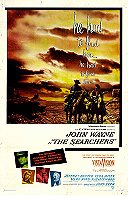
 829
829
 7.9
7.9
 7.8
7.8
